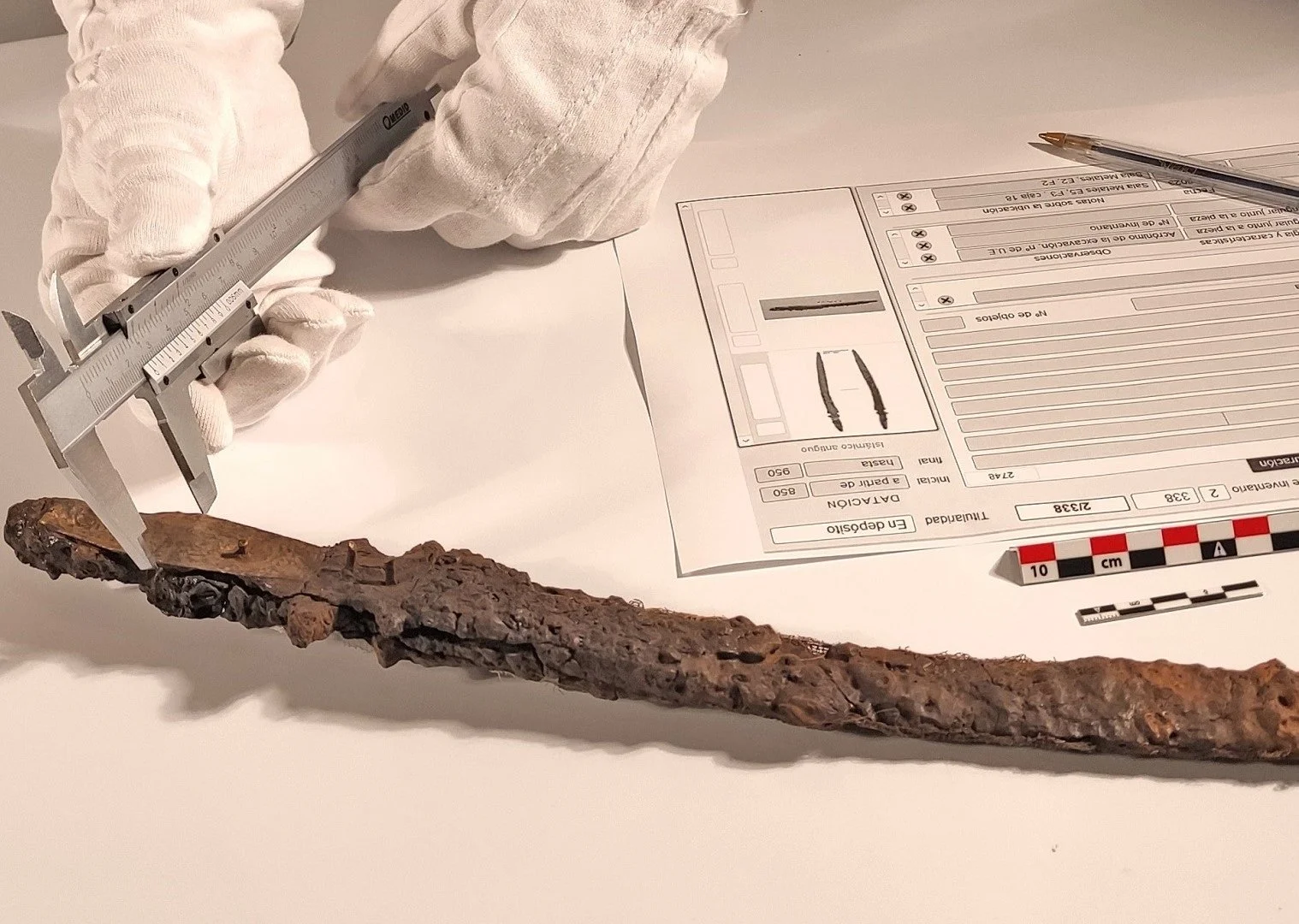A study of the “Excalibur” sword found in Valencia has been revealed to have Islamic origins sometime during the 10th century AD.
Valencia is one of the oldest cities in Spain, founded under the name of Valentia Edetanorum by the Romans in 138 BC.
The city was conquered by the Moors in the 8th century AD, and was destroyed by Abd al-Rahman I of the Umayyad dynasty. Under Caliphate rule, the wider city area became known as Madînat al-Turâb (meaning “city of earth” or “sand”).
The sword was discovered back in 1994 in a house on Valencia’s Historiador Chabàs Street, where it was found standing upright in a grave beneath an Islamic era house.
Dubbed “Excalibur” due to the circumstances of its discovery, the sword is made from iron and has a hilt decorated with bronze plates. In mythology, Excalibur was the legendary sword of King Arthur and appears in various medieval poems describing Arthur pulling the sword from a stone.
However, the “Excalibur” from Valencia was found in a sedimentary strata from the 10th century AD and was likely the weapon of a cavalryman from the Andalusian Caliphate Era.
According to the archaeologists, the sword measures 46 centimetres in length and has a slightly curved blade towards the tip. Swords from this period are rarely found well-preserved due to the levels of oxygen and water in the soil that causes oxidation of the iron.
“It is the first Islamic sword that appears in the city of Valencia, with only one similar example being found during the excavations of Medina Azahara, the caliphal city of Abd al-Rahman III, in Córdoba,” said the Valencia City Council.
Header Image Credit : The Archaeology Service (SIAM) of the Valencia City Council
Sources : Valencia City Council





